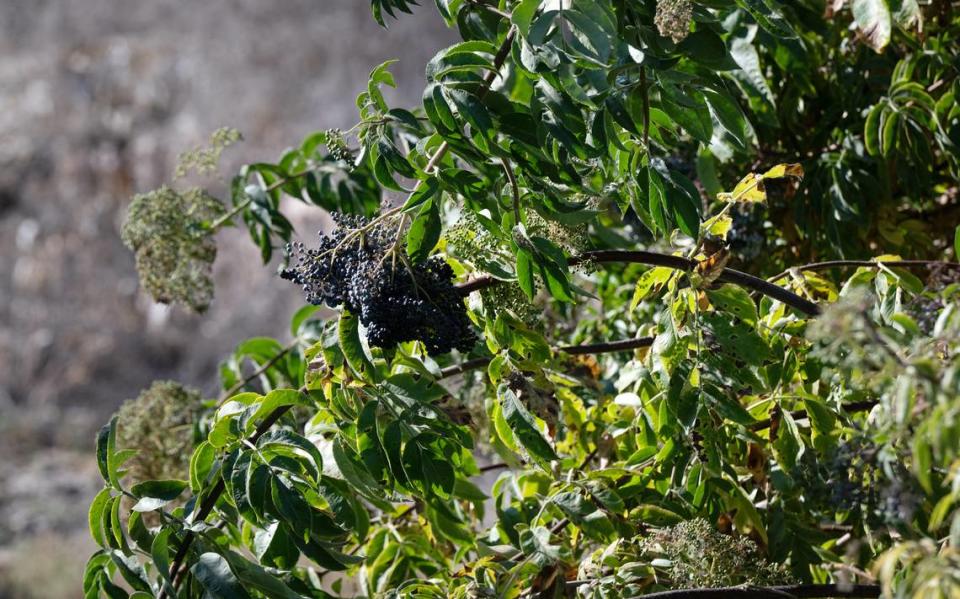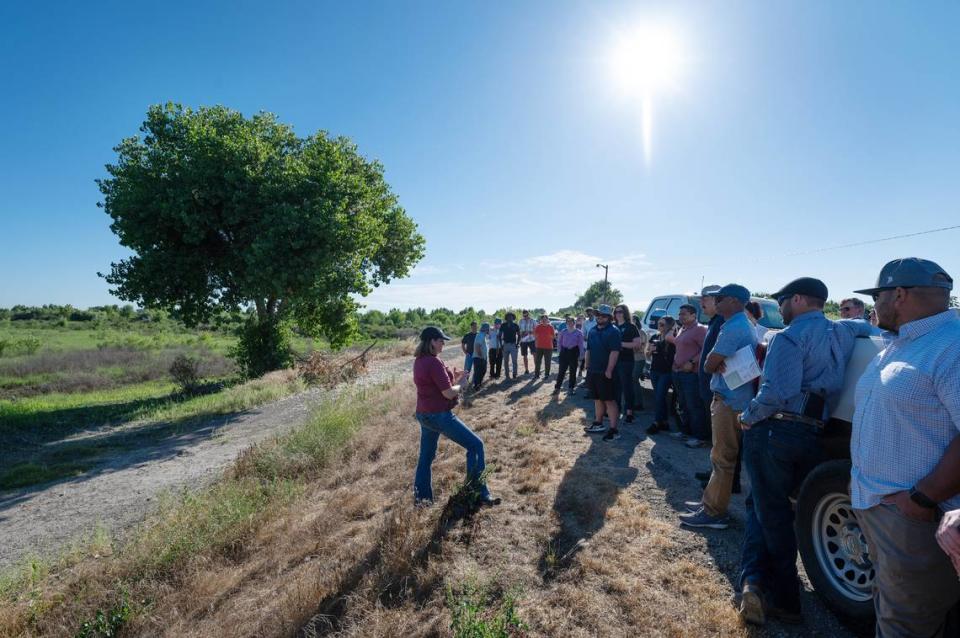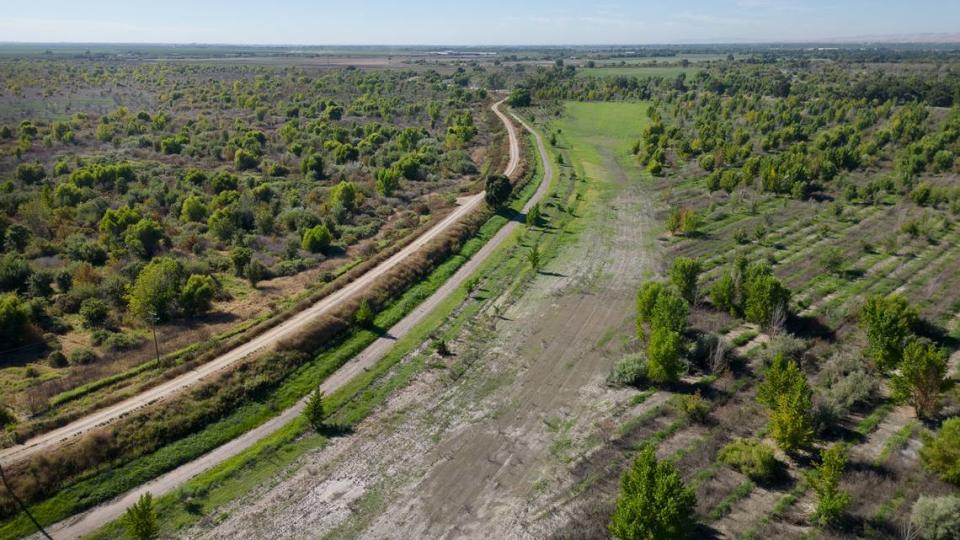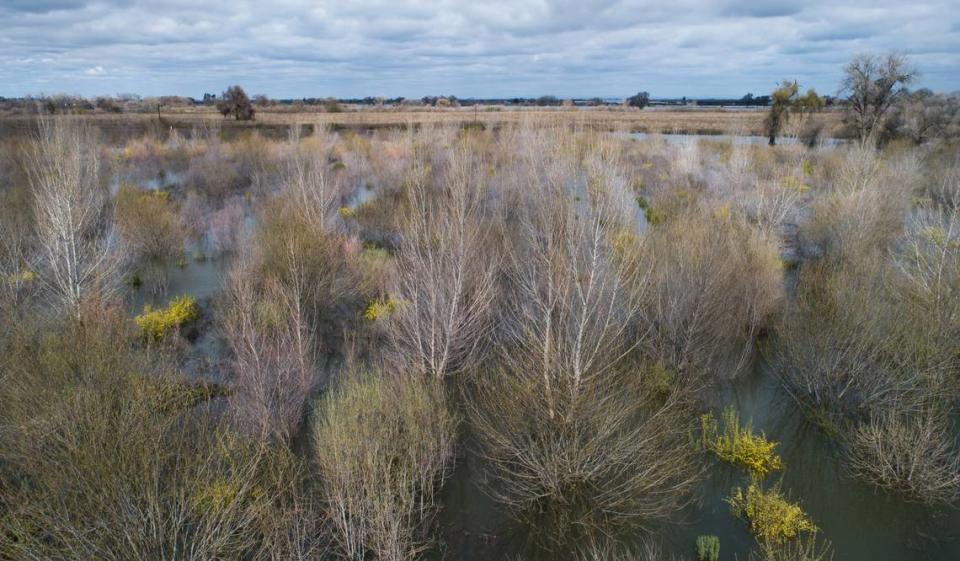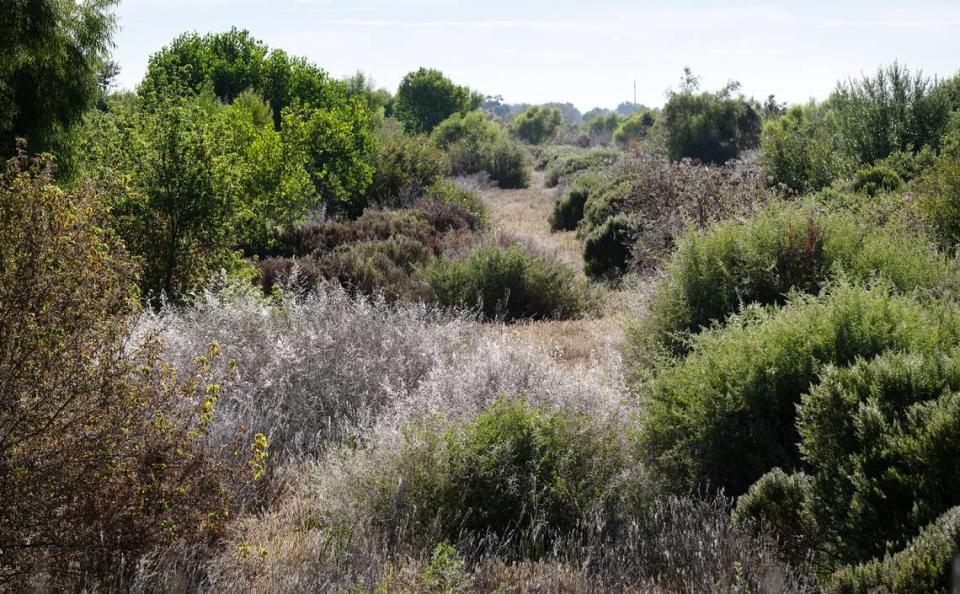Experts tour floodplain restoration west of Modesto that has drawn national media
State and federal flooding experts toured Dos Rios Ranch, a river preserve west of Modesto that continues to impress as a cheaper, faster alternative to building dams.
They saw how these 2,100 acres of restored floodplain handled some of the massive runoff from the 2023 storms. And they talked of how to spread this means of flood control as climate change brings even more erratic weather to California.
Dos Rios is where the Tuolumne and San Joaquin rivers meet. The nonprofit River Partners has joined with the Tuolumne River Trust and other allies on about $45 million worth of restoration since 2012.
The July 26 tour was part of a two-day gathering on “nonstructural” approaches to flood management. Dams will continue to moderate the flows, but new ones are costly and controversial. They also can take decades to build.
Floodplain restoration is done mostly on land purchased from farmers. The crops are replaced by native trees, brush and grasses. Levees are breached in key places to let overflowing rivers spread across the ground.
The projects ease the threat to downstream homes while providing habitat for fish, birds and other creatures. They also can recharge groundwater for use in drier years.
“We want to build in that resiliency and sustainability and not be surprised at events like we had this past flood season,” said Christopher Williams, a manager in the flood planning section at the California Department of Water Resources.
He spoke at a post-tour workshop at the Stanislaus County Agricultural Center, west of Ceres. Another was held June 24 at the Grayson Community Center, just south of Dos Rios.
At least $10.8 billion in projects needed
Williams is part of the team that compiled the 2022 update of the Central Valley Flood Protection Plan. Its key point: The generally warmer climate will mean less Sierra Nevada snow and more rain.
The system is designed to allow snow to gradually melt into the reservoirs by early summer.
The flood plan calls for improving reservoir operations, including high-tech estimates of what’s in the watershed. It also recommends strengthening some of the levees that have guarded Valley towns and farms since the 1800s.
The nonstructural approaches could include groundwater recharge through farm soil, supplementing the restored floodplains. The Turlock Irrigation District demonstrated this with city storm runoff diverted to an almond orchard.
The plan calls for spending at least $10.8 billion in the San Joaquin Valley over the next 30 years. Federal and state agencies would have to boost their spending, and local agencies could contribute, too.
Dos Rios got its first test in 2017, an exceptionally wet year. About 4,800 acre-feet of water sat on floodplains for three months. The above-average 2019 brought about 3,600 acre-feet over two months.
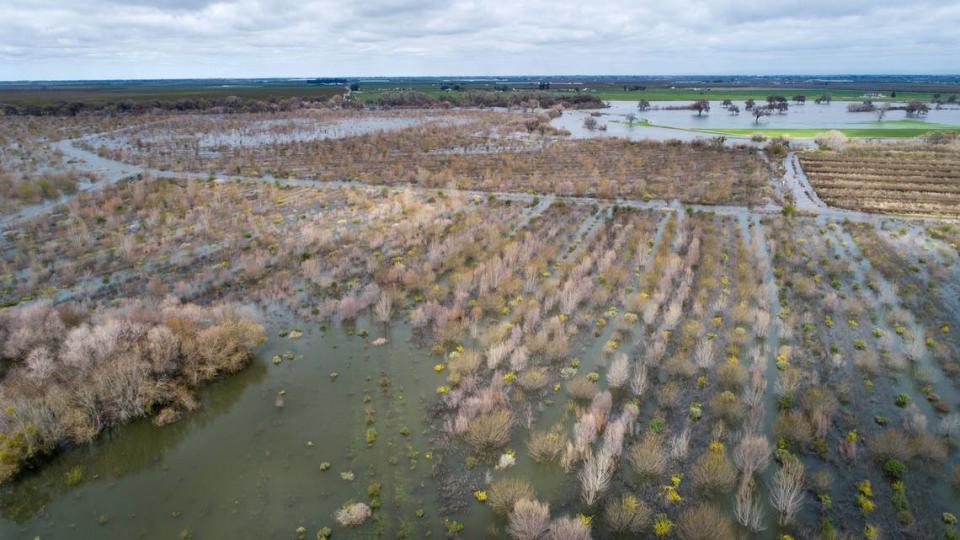
The totals for 2023 are not yet in, since the snowmelt continues far up in the watersheds. But it’s clear that this has been a stunning year, with water rising into Dos Rios tree canopies at the peak.
“The floodplain down here functioned as a shock absorber,” River Partners President Julie Rentner said on the tour. “All that water that comes through the system can spread out and slow down.”
Dos Rios got widespread coverage
Large media outlets have taken notice of Dos Rios. The River Partners website has links to stories from the New York Times, National Public Radio, Reuters and the San Francisco Chronicle.
The success also helped get state leaders to include $40 million for floodplain restoration in the new budget. River Partners will do this at several sites in the San Joaquin Valley and Tulare Lake Basin.
Dos Rios is not open to the public, but that could change soon. Part of it will become a state park, with basic amenities possibly by the end of this year.
Smaller floodplain projects are completed or planned upstream on the Tuolumne, including Modesto’s seven-mile stretch. Similar projects are also being carried out on the Stanislaus and Merced rivers, which feed the San Joaquin.
The two-day program had people from the U.S. Army Corps of Engineers, which helps coordinate river flows around the Valley, and the National Weather Service. Also on hand was the federal Natural Resources Conservation Service, which aids farmers with projects that enhance waterways.
